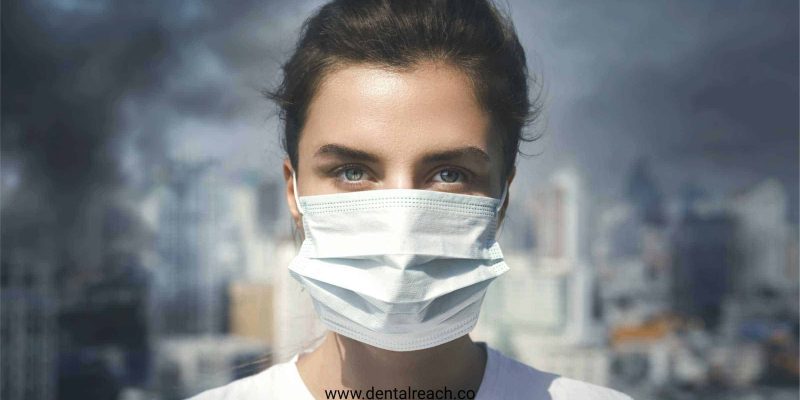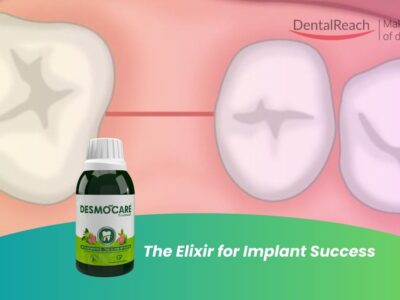We are all well aware of pollution that has been slaying us for years now. Pollution used to be an essay question in school and if I am not wrong it is still. So we human beings studying pollution for decades have not managed to raise a single finger to do something about it, is what we can conclude by released statistical reports. Recently on the festive evening of Diwali, New Delhi was proclaimed as the most polluted city on earth. Health issues are given code red during this scenario. But how many of us are aware of pollution having adverse effects on the development of teeth, on the beautiful pearls we brush and clean every day.
Pollution by definition is introduction of contaminants into the natural environment that causes adverse change. IARC* has classified air pollution has human carcinogen. Poor air quality is linked to premature death, cancer and long-term damage to respiratory and cardiovascular systems. Air pollution influences the development of oral clefts in animals. There are few epidemiologic data on the relation of prenatal air pollution exposure and the risk of oral clefts. New evidence suggests that exposure to outdoor air O3 during the first and second month of pregnancy may increase the risk of cleft lip/cleft palate. Similar levels of O3 are encountered globally by large numbers of pregnant women.*(1)
Particulate Matter (PM) consists of breathable particles to which several compounds, such as heavy metals, polycyclic aromatic hydrocarbons (PAHs) and some volatile compounds may adhere. Epidemiological studies have found a consistent association between exposure to airborne PM and incidence and mortality for cardiovascular disease as well as lung cancer with natural cause mortality*(2–9). Recently, diabetes and other chronic diseases have been associated with PM exposure, possibly through oxidative stress and inflammation*(10). The finest fractions of PM (PM2.5 and less) play a major role in causing chronic diseases because they are retained in the alveolar regions of the lungs and diffuse into the bloodstream, inducing inflammation, oxidative stress and blood coagulation *(11,12). Children are a high-risk group in terms of the health effects of air pollution. Some studies suggest that early exposure during childhood can play an important role in the development of chronic diseases in adulthood. A study conducted in children living in a town with high levels of air pollutants in a Western country, the conclusion drawn was a high level of MN** in buccal mucosa cells, confirming previous findings of a mutagenic effect of urban air pollution on human beings. Thus DNA damage in buccal mucosa cells of Pre-School children exposed to high levels of urban air pollutants was confirmed.*(13)
All this scary evidence gives us a brief idea of how health and oral health are getting affected and interlinked. Exposure to solvents and pesticides, fertilisers, engine exhaust, textile dust and leather dust also increase the risk of oral cancer. Another contributing factor to oral cancer is indoor air pollution with other significant inflammatory respiratory diseases and infections. Around 50% of people in developing countries rely on coal and biomass in the form of wood, dung and crop residues for domestic energy. These materials are typically burnt in simple stoves with incomplete combustion thereby exposing women and children to indoor air pollution on a daily basis.
In India, the increasing economic development and a rapidly growing population that has taken the country from 300 million people in 1947 to more than one billion people today is putting a strain on the environment, infrastructure and the country’s natural resources. The latest urban air quality database of 2014 released by WHO reconfirms that most Indian cities are becoming death traps because of very high air pollution levels. It’s estimated to be the cause of seven million premature deaths every year (4.3 million from ambient outdoor pollution, and 2.6 from households).*(14). In this scenario, we should be conscious of our health and try our best to lessen this pollution even if it is in a small way. Let’s observe this National Pollution Day coming on December 2nd by taking small steps in minimising pollution thereby taking better care of our health, our children and our future generations.
Air Quality Index on Nov 16, 2018 @ 4 PM
(Average of past 24 hours)
| City | Air Quality | Index Value | Prominent Pollutant | Based on Number of Monitoring Stations |
| Delhi | Poor | 285 | PM2.5 | 37 |
| Mumbai | Moderate | 129 | PM10 | 1 |
| Chennai | Satisfactory | 54 | CO | 2 |
| Kolkata | Very Poor | 308 | PM2.5 | 2 |
| Hyderabad | Moderate | 118 | PM10, PM2.5 | 6 |
| Thiruvananthapuram | Satisfactory | 78 | PM10 | 1 |
| Varanasi | Very Poor | 326 | PM2.5 | 1 |
Possible Health Impacts
| Good | Minimal Impact |
| Satisfactory | Minor breathing discomfort to sensitive people |
| Moderate | Breathing discomfort to the people with lungs, asthma and heart diseases |
| Poor | Breathing discomfort to most people on prolonged exposure |
| Very Poor | Respiratory illness on prolonged exposure |
| Severe | Affects healthy people and seriously impacts those with existing diseases |
# cpcb.nic.in//upload/Downloads/AQI_Bulletin_20181116.pdf
Abbreviations
*IARC : International Agency for Research on Cancer
** MN : Micronuclei ( MN frequency used as a biomarker of DNA damage)
Reference
- Ozone and Other Air Pollutants and the Risk of Oral Clefts by Bing-Fang Hwang and Jouni J.K. Jaakkola, Environ Health Perspect. 2008 Oct; 116(10): 1411–1415.
- Particulate matter air pollution: how it harms health. World Health Organisation, 2005
- Anderson JO, Thundiyil JG, Stolbach A. Clearing the air: a review of the effects of particulate matter air pollution on human health. J Med Toxicol 2012;8:166–75.
- Raaschou-Nielsen O, Andersen ZJ, Beelen R, et al. Air pollution and lung cancer incidence in 17 European cohorts: prospective analyses from the European Study of Cohorts for Air Pollution Effects (ESCAPE). Lancet Oncol 2013;14:813–22.
- Shah ASV, Langrish JP, Nair H, et al. Global association of air pollution and heart failure: a systematic review and meta-analysis. Lancet 2013;382:1039–48.
- Silva RA, West JJ, Zhang Y, et al. Global premature mortality due to anthropogenic outdoor air pollution and the contribution of past climate change. Environ Res Lett 2013;8:034005.
- Review of evidence on health aspects of air pollution— REVIHAAP Project. First results. WHO Regional Office for Europe, World Health Organisation, 2013
- Beelen R, Raaschou-Nielsen O, Stafoggia M, et al. Effects of long-term exposure to air pollution on natural-cause mortality: an analysis of 22 European cohorts within the multicentre ESCAPE project. Lancet 2014;383:785–95
- Cesaroni G, Forastiere F, Stafoggia M, et al. Long term exposure to ambient air pollution and incidence of acute coronary events: prospective cohort study and meta-analysis in 11 European cohorts from the ESCAPE Project. BMJ 2014;348:f7412.
- Puett RC, Hart JE, Schwartz J, et al. Are particulate matter exposures associated with risk of type 2 diabetes? Environ Health Perspect 2011;119:384–9.
- Sørensen M, Autrup H, Møller P, et al. Linking exposure to environmental pollutants with biological effects. Mutat Res 2003;544:255–71.
- Lewtas J. Air pollution combustion emissions: characterization of causative agents and mechanisms associated with cancer, reproductive, and cardiovascular effects. Mutat Res 2007;636:95–133.
- DNA damage in buccal mucosa cells of pre-school children exposed to high levels of urban air pollutant;Elisabetta Ceretti,Donatella Feretti;Published: May 2, 2014 org/10.1371/journal.pone.0096524.
- Institute for Health Metrics and Evaluation (2017). Global Burden of Disease (GBDx Results Tool). Available online.




















Comments